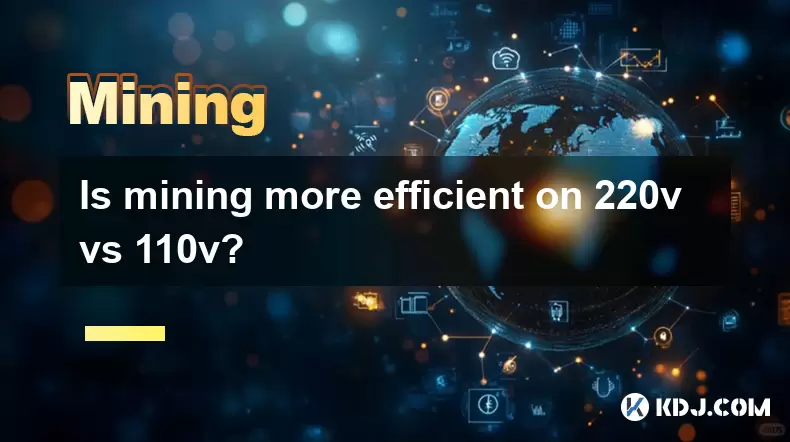-
 Bitcoin
Bitcoin $117,272.7457
1.45% -
 Ethereum
Ethereum $2,938.4907
0.32% -
 XRP
XRP $2.7050
7.14% -
 Tether USDt
Tether USDt $1.0003
0.03% -
 BNB
BNB $688.4019
0.08% -
 Solana
Solana $162.0506
-0.53% -
 USDC
USDC $0.9999
0.01% -
 Dogecoin
Dogecoin $0.1981
2.75% -
 TRON
TRON $0.3014
2.68% -
 Cardano
Cardano $0.7006
4.22% -
 Hyperliquid
Hyperliquid $45.7987
5.26% -
 Sui
Sui $3.3641
-1.74% -
 Stellar
Stellar $0.3530
17.81% -
 Bitcoin Cash
Bitcoin Cash $526.1849
1.91% -
 Chainlink
Chainlink $15.0782
-0.24% -
 Avalanche
Avalanche $20.4108
-1.04% -
 UNUS SED LEO
UNUS SED LEO $9.0974
0.64% -
 Hedera
Hedera $0.1908
0.86% -
 Shiba Inu
Shiba Inu $0.0...01307
-0.71% -
 Toncoin
Toncoin $2.9472
0.65% -
 Litecoin
Litecoin $93.4465
-0.72% -
 Polkadot
Polkadot $3.8633
0.76% -
 Monero
Monero $331.7195
1.21% -
 Uniswap
Uniswap $8.6299
3.44% -
 Dai
Dai $0.9997
-0.01% -
 Ethena USDe
Ethena USDe $1.0005
0.00% -
 Bitget Token
Bitget Token $4.5000
-1.64% -
 Pepe
Pepe $0.0...01213
-0.55% -
 Aave
Aave $293.9403
-3.56% -
 Bittensor
Bittensor $388.7816
4.71%
Is mining more efficient on 220v vs 110v?
Mining at 220v can slightly improve efficiency due to lower current and reduced line losses, but overall savings depend more on PSU quality and electricity rates.
Jul 12, 2025 at 07:42 am

Understanding Voltage in Cryptocurrency Mining
When discussing the efficiency of cryptocurrency mining, one often overlooked factor is the voltage supply—specifically whether 220v or 110v power systems are more efficient. This question is particularly relevant for miners setting up operations in regions where either voltage is standard. Voltage refers to the electrical potential difference that drives current through a circuit. In mining, this directly affects how much power is consumed and how efficiently it is used.
The key point to understand is that voltage itself doesn't determine efficiency—rather, it's how the power is delivered and utilized by the mining hardware. Mining rigs typically run on direct current (DC), while the power supplied to homes and businesses is alternating current (AC). Power supply units (PSUs) convert this AC to DC for the mining hardware. The efficiency of this conversion and how it impacts the mining process is what we'll explore.
Power Consumption and Electrical Efficiency
Efficiency in mining is often measured in watts per gigahash (W/GH) or watts per terahash (W/TH) depending on the algorithm. The goal is to minimize this number, meaning you're spending less electricity for more computational work. The voltage of the power supply affects the current draw and the potential for energy loss.
In a 220v system, the current required to deliver the same amount of power is lower than in a 110v system. Lower current means less resistance loss in wiring, which translates to slightly better electrical efficiency. This is due to Ohm’s Law, where power loss is proportional to the square of the current. Therefore, running at 220v can reduce line losses and potentially improve efficiency by a small margin.
However, the actual mining hardware doesn't necessarily care whether it's getting 110v or 220v as long as the PSU can convert it efficiently. What matters most is the efficiency rating of the PSU, such as 80 Plus Bronze, Silver, Gold, or Platinum. A high-quality PSU can mitigate most differences between the two voltages.
Hardware Compatibility and Power Supply Units
Most modern mining rigs and PSUs are designed to operate within a wide voltage range, typically between 100v and 240v. This means that both 110v and 220v systems are compatible with the same hardware. However, the type of PSU and wiring setup must be matched to the local voltage standard.
For example, in the United States, where 120v (commonly referred to as 110v) is standard, miners often use PSUs designed for that voltage. In contrast, in Europe and Asia, where 220v to 240v is standard, miners use PSUs that are compatible with those higher voltages. Using a step-down or step-up transformer can allow cross-compatibility, but this introduces additional inefficiencies and potential points of failure.
If you're using a non-native voltage, ensure that your PSU is rated for that input and that your wiring can handle the current draw. Improper setup can lead to overheating, voltage drops, or even fire hazards.
Practical Setup Differences Between 110v and 220v Mining
When setting up a mining rig, the voltage affects the type of circuit breaker, wiring gauge, and outlet type required. In general, 220v systems allow for higher power delivery on thinner wires, which can be beneficial for large-scale mining farms.
For instance, if you're running multiple ASIC miners or GPU rigs, a 220v system can support higher total wattage without requiring multiple circuits. This reduces the complexity of wiring and potentially lowers the cost of electrical infrastructure.
On the other hand, 110v systems are more common in residential settings, making them easier to access for individual miners. However, running multiple high-power mining rigs on 110v may require dedicated circuits to avoid overloading the system.
Another consideration is the availability of compatible PSUs. In some regions, 220v-compatible PSUs may be more readily available and cost-effective. In others, especially in North America, 110v PSUs dominate the market.
Energy Cost and Regional Implications
The cost of electricity is a major factor in mining profitability, and this can vary significantly by region. While voltage doesn't directly affect the kilowatt-hour (kWh) price, it can influence how much power is lost during transmission and conversion.
In areas where 220v is standard, the grid infrastructure is often optimized for that voltage, leading to more stable power delivery and potentially lower line losses. This can result in slightly lower effective electricity costs over time.
Conversely, in regions with 110v systems, especially older homes or buildings, there may be greater voltage fluctuations and less efficient power delivery, which can impact mining performance and longevity of hardware.
Miners should also consider the availability of renewable energy sources or industrial power rates, which can have a much greater impact on profitability than the voltage itself.
How to Optimize Mining Efficiency Based on Voltage
To maximize mining efficiency based on voltage, follow these steps:
- Check PSU compatibility – Ensure your power supply unit is rated for the local voltage.
- Use high-efficiency PSUs – Look for units with 80 Plus Gold or Platinum ratings.
- Avoid using transformers – They introduce inefficiencies and heat.
- Upgrade wiring if necessary – Thicker gauge wires reduce resistance and power loss.
- Monitor power draw – Use tools like Kill A Watt meters to track real-time consumption.
- Balance load across circuits – Prevent overloading by distributing power usage evenly.
- Consider voltage conversion hardware – If relocating mining rigs across regions, use proper converters.
By following these practices, miners can ensure they are getting the most out of their hardware regardless of the voltage standard in their region.
Frequently Asked Questions
Q: Does mining at 220v save more money than 110v?
A: While 220v systems may have lower line losses, the cost savings are minimal unless you're operating at a large scale. Electricity rates and PSU efficiency play a much larger role in overall cost.
Q: Can I use a 220v PSU in a 110v region?
A: Yes, if the PSU is auto-voltage detecting, it will adjust automatically. If not, you may need to manually switch the voltage setting or risk damaging the unit.
Q: Is it safe to convert 110v to 220v for mining?
A: It can be safe if done with a high-quality voltage converter or transformer and proper wiring. However, it's not recommended for long-term use due to potential inefficiencies and heat buildup.
Q: Do mining pools or software settings change based on voltage?
A: No, mining pools and software do not differentiate between voltages. They only care about the hash rate and uptime of your hardware.
Disclaimer:info@kdj.com
The information provided is not trading advice. kdj.com does not assume any responsibility for any investments made based on the information provided in this article. Cryptocurrencies are highly volatile and it is highly recommended that you invest with caution after thorough research!
If you believe that the content used on this website infringes your copyright, please contact us immediately (info@kdj.com) and we will delete it promptly.
- Eddie Rocks the Royal Mint: Iron Maiden's 50th Anniversary Gets Coin-ified!
- 2025-07-12 16:30:11
- Sui Price Surge, Remittix Emerges: DeFi and Altcoin Opportunities in 2025
- 2025-07-12 17:10:12
- XLM Price Surges Amid Stellar Upgrade Buzz: Is $1 Within Reach?
- 2025-07-12 17:10:12
- PumpFun, Solana, and the Launchpad Competition: A Meme Coin Arena?
- 2025-07-12 16:50:12
- Pepe Coin Price Prediction: Pump or Dump? What's Next for the Frog Meme?
- 2025-07-12 16:30:11
- Binance, CZ, and the Trump Family: A Crypto Tango?
- 2025-07-12 17:15:12
Related knowledge

How to keep a mining rig cool
Jul 12,2025 at 01:42pm
Understanding the Importance of Cooling in Mining RigsCryptocurrency mining is an intensive process that places heavy demand on hardware components, p...

How to find the best Dogecoin mining pool for me
Jul 12,2025 at 04:14pm
Understanding the Role of a Mining PoolWhen mining Dogecoin, joining a mining pool can significantly increase your chances of earning consistent rewar...

How to update Dogecoin miner software
Jul 12,2025 at 12:36pm
Understanding Dogecoin Mining and the Need for Software UpdatesDogecoin mining involves using specialized software to validate transactions on the Dog...

Overclocking settings for Dogecoin mining
Jul 12,2025 at 12:57pm
Understanding Overclocking in Dogecoin MiningOverclocking refers to the process of increasing the clock rate of a component—typically a GPU or CPU—bey...

Is it worth mining Bitcoincoin
Jul 12,2025 at 04:35pm
Understanding the Basics of Dogecoin MiningDogecoin (DOGE) is a cryptocurrency that was originally created as a joke in 2013 but has since gained sign...

Can I join multiple mining pools with one machine?
Jul 12,2025 at 03:14pm
Understanding Mining Pools and Their PurposeMining pools are collaborative networks where multiple cryptocurrency miners combine their computational r...

How to keep a mining rig cool
Jul 12,2025 at 01:42pm
Understanding the Importance of Cooling in Mining RigsCryptocurrency mining is an intensive process that places heavy demand on hardware components, p...

How to find the best Dogecoin mining pool for me
Jul 12,2025 at 04:14pm
Understanding the Role of a Mining PoolWhen mining Dogecoin, joining a mining pool can significantly increase your chances of earning consistent rewar...

How to update Dogecoin miner software
Jul 12,2025 at 12:36pm
Understanding Dogecoin Mining and the Need for Software UpdatesDogecoin mining involves using specialized software to validate transactions on the Dog...

Overclocking settings for Dogecoin mining
Jul 12,2025 at 12:57pm
Understanding Overclocking in Dogecoin MiningOverclocking refers to the process of increasing the clock rate of a component—typically a GPU or CPU—bey...

Is it worth mining Bitcoincoin
Jul 12,2025 at 04:35pm
Understanding the Basics of Dogecoin MiningDogecoin (DOGE) is a cryptocurrency that was originally created as a joke in 2013 but has since gained sign...

Can I join multiple mining pools with one machine?
Jul 12,2025 at 03:14pm
Understanding Mining Pools and Their PurposeMining pools are collaborative networks where multiple cryptocurrency miners combine their computational r...
See all articles

























































































